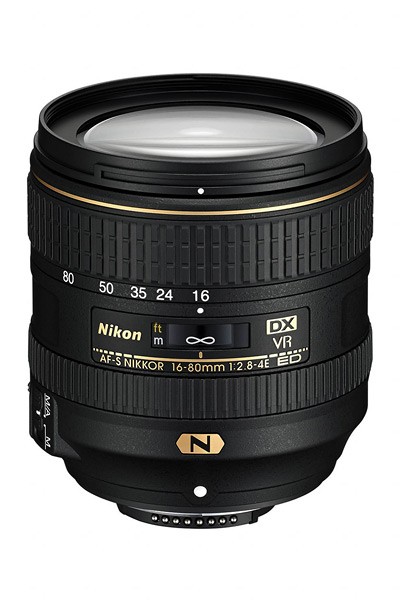Nikon has just announced a new DX zoom lens for its cropped frame sensor cameras—the Nikkor AF-S 16–80 mm f/2.8–4 DX VR. If we were being optimistic, this might be the first sign of a breath of life for the Nikon DX range of DSLR bodies and lenses.
This new lens, in and of itself, isn’t particularly exciting for low light action photographers. It presumably replaces the well regarded Nikkor AF-S 16–85 mm f/3.5–5.6 DX VR lens that’s been around for several years already. Optically, it’s noticeably faster (f/2.8 vs f/3.5 at the short end; f/4 vs f/5.6 at the long end), but its focal length range is slightly smaller (80 mm vs 85 mm at the long end).
What makes this lens exciting is that its specifications suggest that it’ll be a high quality DX lens—probably a professional quality DX lens. It should be a significant step above the many consumer-grade DX zoom lenses Nikon has produced. If so, it would be the first professional quality DX lens Nikon has made since the 12–24 mm f/4 and 17–55 mm f/2.8 DX lenses from a decade ago. In short, I don’t think Nikon would have made this lens if it intended to keep the DX system for non-professional photographers.
For some photographic tasks, a DX (or EF-S in Canon terms) sized sensor is the best fit for the job. Let’s not forget that sensor technology has been improving quickly over the past decade; DX sized sensors are capable of much better image quality now than they were in the past—certainly sufficient for low light action photography. But Nikon’s DX system will only be viable for serious photography if all parts of the system are treated seriously by Nikon, and this new lens is a possible sign of that.

I believe this is the first Nikkor DX lens with a gold ring around the lens barrel, near the front element of the lens in the image above. The gold ring originally indicated the use of Extra-low Dispersion (ED) glass within the lens, but seems to have become more of a badge of prestige for Nikon’s lenses—much as Canon reserves a red ring around the lens barrel for its Luxury (L) lenses. I think this is also the first Nikkor DX lens to use Nikon’s nano crystal coating (anti-reflection), as marked by the large N above the lens mount in the image above.
Could this indeed be a breath of life for the Nikon DX system? It looks like it just might be.
It looks like the price for this new lens is around $1,400. Compared to around $2,000 for the Nikkor AF-S 17–55 mm f/2.8 DX lens, I suppose this offers better value for money, but we would want to see exceptional performance in the new lens for that price.